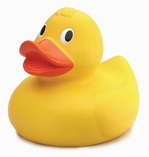
Resonance is one of the most important keys to good singing. What is it? Well in it's purest form it's the sound of a babies cry, a cat's meow, a seagull swark, and a quacking duck. It's got that cartoonish element to it like Janice from Friends. A lot of newbie students to singing feel very held back about using it because it sounds loud and irritating and pitchy mistakes are made more obvious, but if you want to develop a strong healthy tone, you've got to get over that. If you listen to your favourite singer in the raw I'm sure they'll have plenty of twang resonance going on. I want to suggest to you that you find your edges with twang. What's the biggest most horrible twanging sound you can make? This usually happens naturally when you're emotionally charged so listen out for those moments.
Reasons to Twang
1. Volume.
Twang gives your voice the illusion of volume, so you don't actually have to sing louder. Our ears have receptors on them that resonate with this specific frequency (around 3.2khz) and so if you use twang when you sing, you'll be heard much more. Feel that your voice lacks power? Use twang. It's what's known as a primal sound. It's an alarming alerting type of sound that draws your attention in. Baby crying on a bus? Know that one?
2. It Stabilises the Vocal Tract.
When we're trying to get more power in the voice we will be driving more air up against the vocal folds thereby increasing sub-glottic pressure. Sub glottic pressure is the air pressure under the vocal folds cause by the air being driven up from the lungs and a dam wall (against the air) being created by the vocal folds closing during singing. This pressure can create instability if it's not supported by some kind of muscularity and result in your vocal folds being blow apart accidentally which results in a cracking sound, flip or yodel. In order to achieve the level of sub glottic pressure required for powerful vocals we need to engage the muscles around the larynx (and the abdomen) to take some of the weight of this sub glottic pressure. Twang does that.
Twang gives your voice the illusion of volume, so you don't actually have to sing louder. Our ears have receptors on them that resonate with this specific frequency (around 3.2khz) and so if you use twang when you sing, you'll be heard much more. Feel that your voice lacks power? Use twang. It's what's known as a primal sound. It's an alarming alerting type of sound that draws your attention in. Baby crying on a bus? Know that one?
2. It Stabilises the Vocal Tract.
When we're trying to get more power in the voice we will be driving more air up against the vocal folds thereby increasing sub-glottic pressure. Sub glottic pressure is the air pressure under the vocal folds cause by the air being driven up from the lungs and a dam wall (against the air) being created by the vocal folds closing during singing. This pressure can create instability if it's not supported by some kind of muscularity and result in your vocal folds being blow apart accidentally which results in a cracking sound, flip or yodel. In order to achieve the level of sub glottic pressure required for powerful vocals we need to engage the muscles around the larynx (and the abdomen) to take some of the weight of this sub glottic pressure. Twang does that.
Here are some videos to help you find your twanger.
You might be wondering how all of this relates to making a song sound beautiful... Well, you can add as much or as little to your sound as you want. The more you mix up your voice qualities within a song the more professional it sounds. Here's an exercise for that.
Here's how you can add varying degrees of twang in your songs to make them stand out. See if you can analyse exactly where I'm switching on my twang a bit more, also where I'm using breathy and low larynx qualities. Practise this yourself with a song of your choice slowly and consciously. Don't worry about the aesthetics, trust your own taste!
 RSS Feed
RSS Feed
